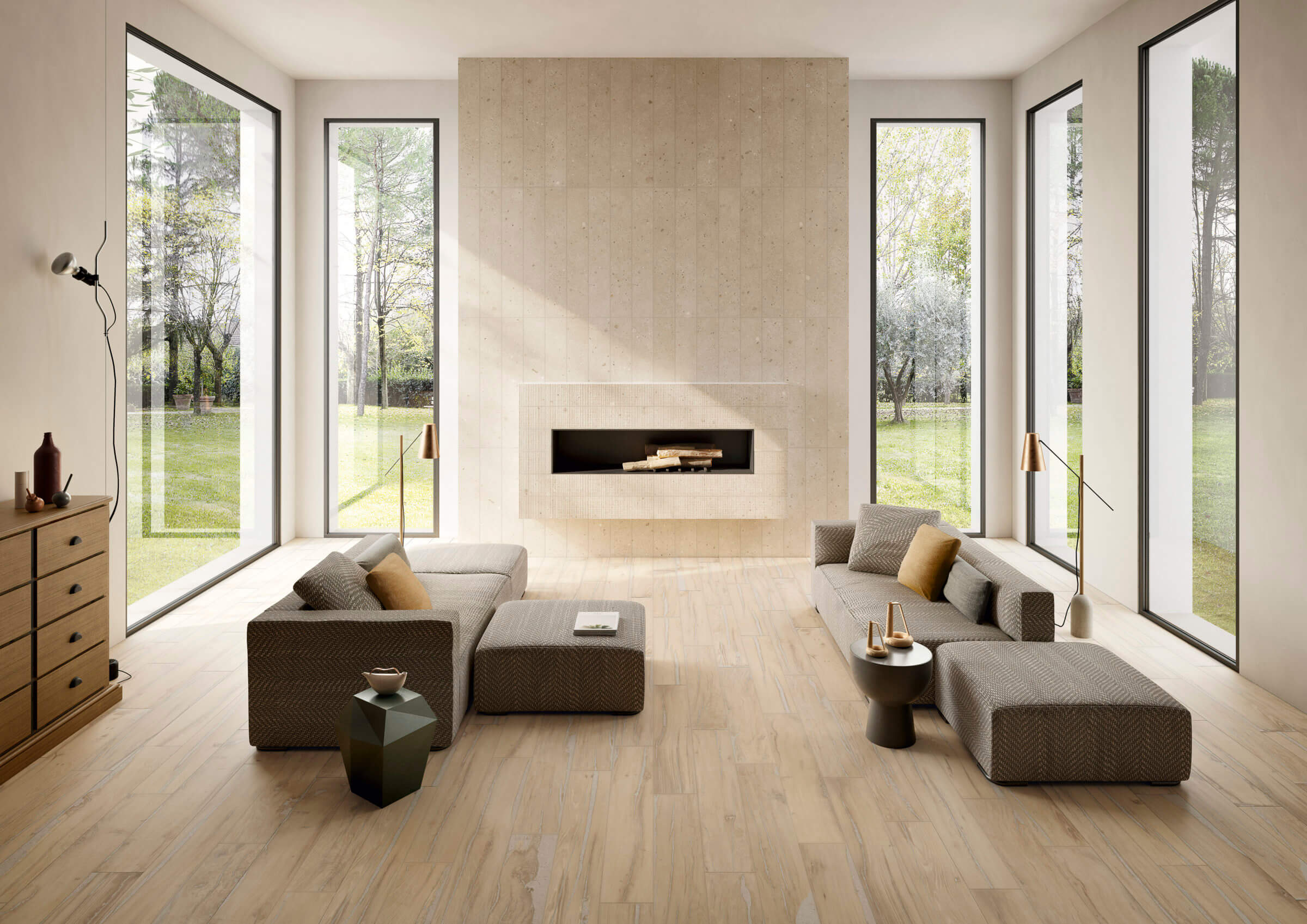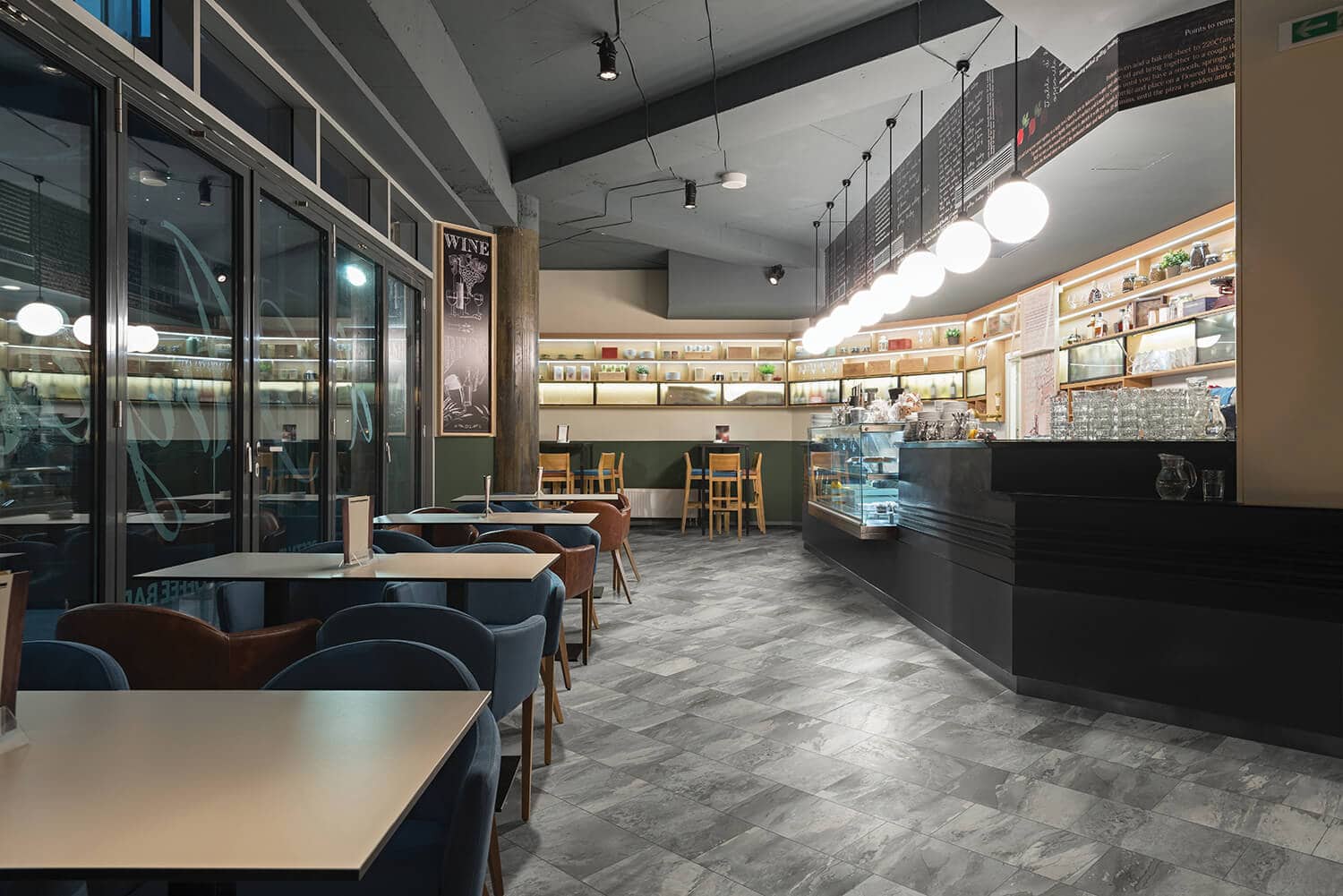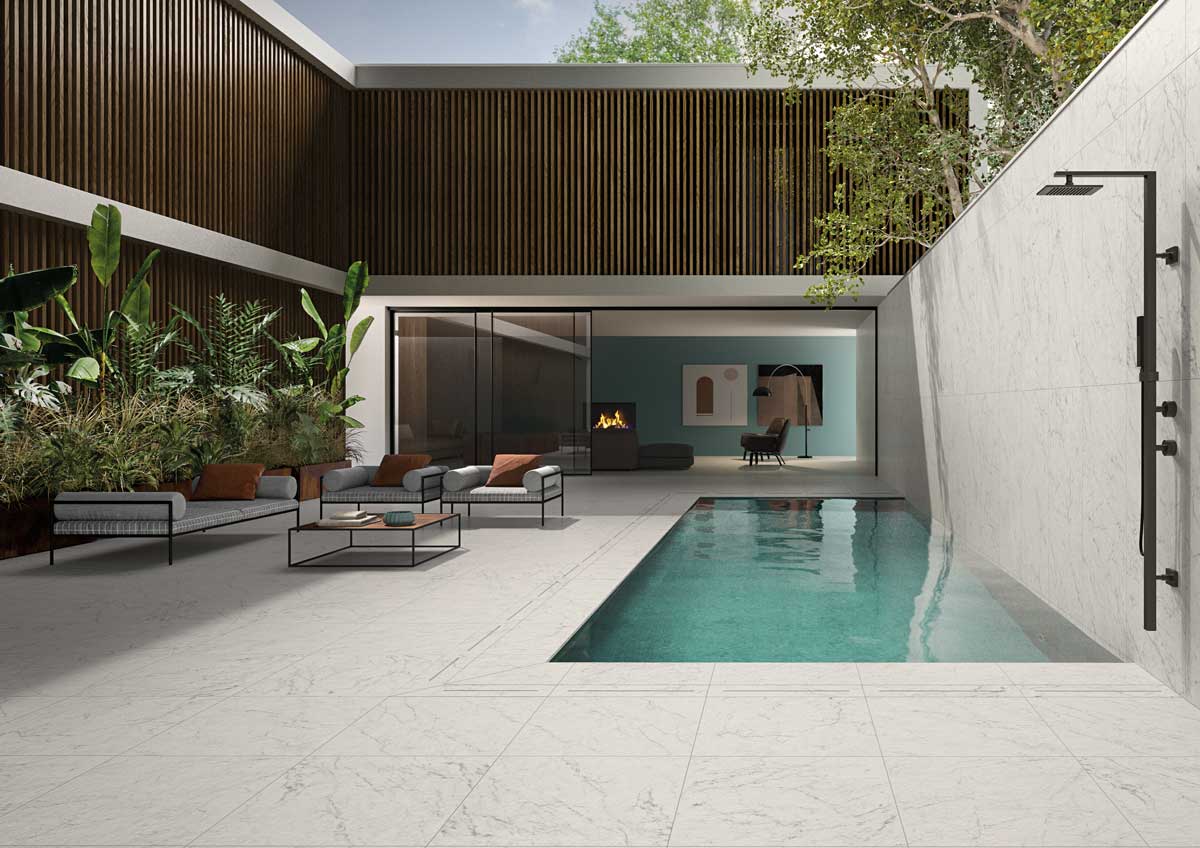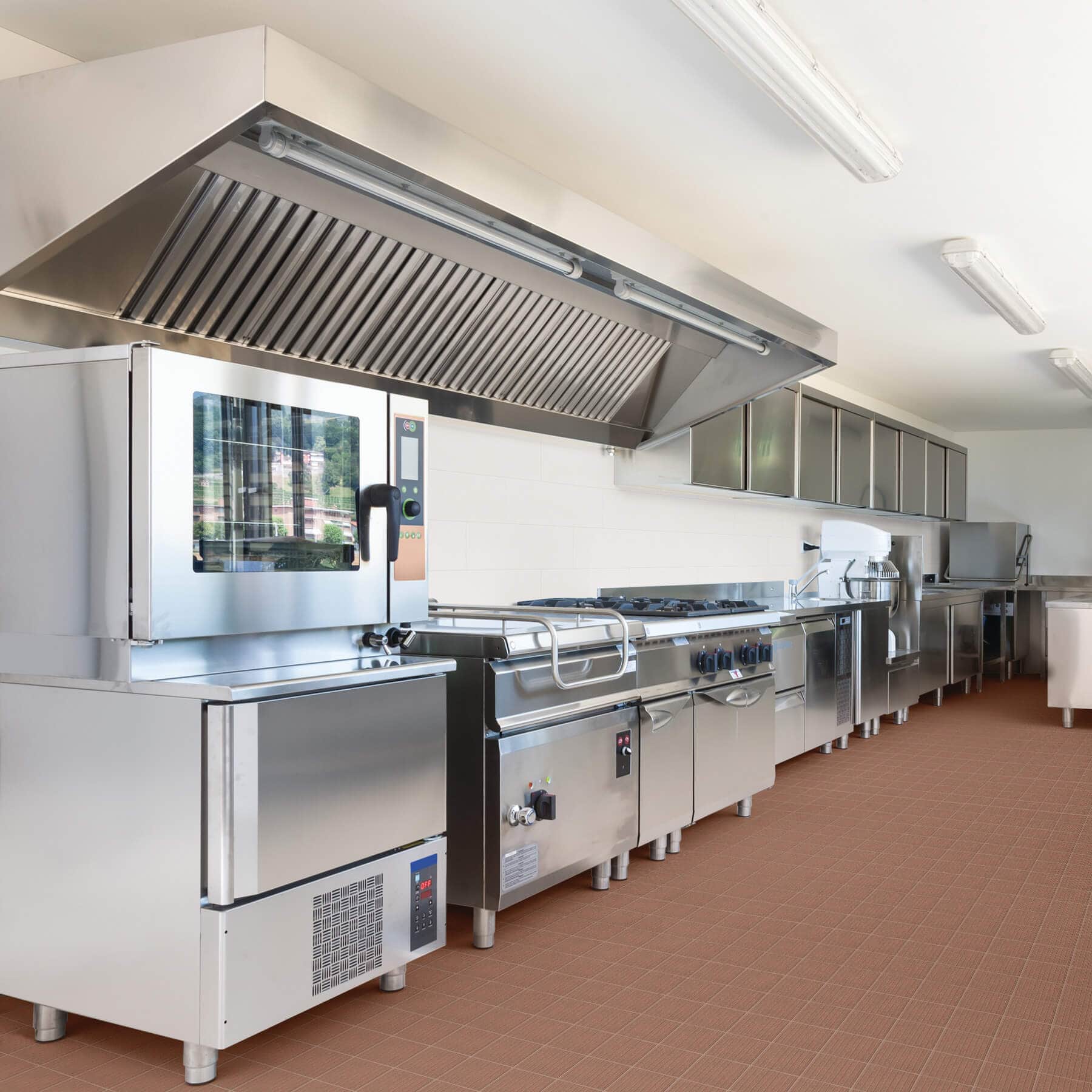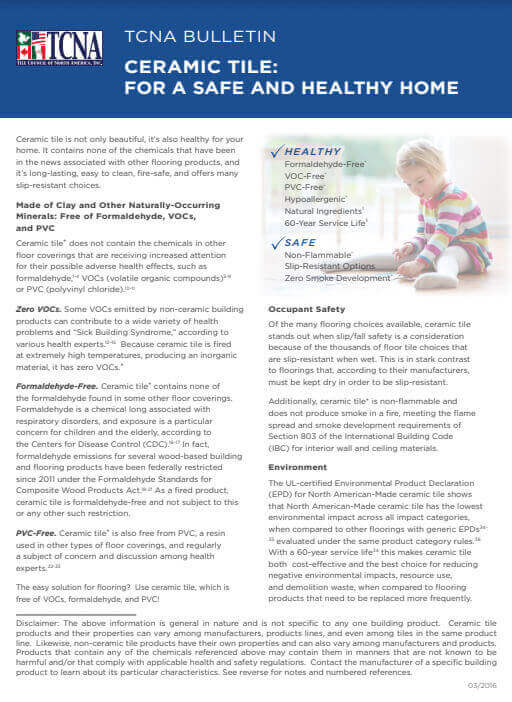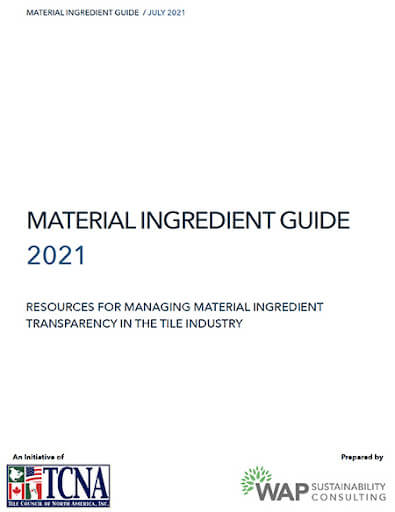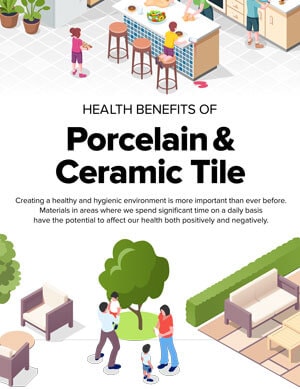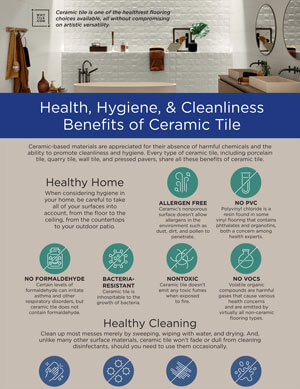Different flooring materials have certain attributes that may make a material more beneficial for a particular application than another.
Important Questions to Consider When Comparing Materials
- What is the flooring material made of?
- What conditions will the material be exposed to—wet, dry, or oil and grease?
- Could the materials adversely affect allergenicity or air quality?
- How does the sourcing, use, or disposal of a material impact the environment?
- What associated costs should be expected over the life of a particular material — taking in to account purchase price, installation, maintenance, and disposal?
| Ingredient | Vinyl Flooring | Laminate Flooring | Engineered Wood Flooring | Solid Wood Flooring | Ceramic Tile |
|---|---|---|---|---|---|
| VOCs | ▼ | ▼ | ▼ | ▼ | ● |
| Formaldehyde | ▼ | ▼ | ▼ | ● | ● |
| Phthalate | ▼ | ● | ● | ● | ● |
| Organotin | ▼ | ▼ | ● | ● | ● |
| Allergens | ▼ | ▼ | ▼ | ● | ● |
| Plastic | ▼ | ● | ● | ● | ● |
Comparison of Product Use Categories for Flooring Materials
The ANSI A326.3 American National Standard Test Method for Measuring Dynamic Coefficient of Friction of Hard Surface Flooring Materials allows manufacturers to directly communicate areas of use based on the slip resistance characteristics of their products.
The American National Standard A326.3 is intended to serve as a guide to the general public, manufacturers, distributors, specifiers, architects, contractors, testing laboratories, building owners, and other businesses and professionals.
According to the standard, hard surface flooring products shall be classified into one or more of the categories. Additionally, the standard provides informative “possible areas of use” for each category. Some examples are excerpted below.
The Five Product Use Categories
1. Interior, Dry (ID)
Possible areas of use (some examples excerpted from A326.3): indoor shopping malls (excepting food courts), hotel lobbies, office buildings, showrooms, and home interiors without water sources.
2. Interior, Wet (IW)
Possible areas of use (some examples excerpted from A326.3): entry foyers, public restrooms (without showers), grocery stores, “front of the house” in fine and casual dining restaurants with a closed kitchen, and home interiors including bathrooms and kitchens.
3. Interior, Wet Plus (IW+)
Possible areas of use (some examples excerpted from A326.3): Public showers, interior pool decks, locker rooms, covered exterior areas, steam rooms, “front of the house” applications in restaurants with an open kitchen, and in “front of the house” applications in quick service, fast-casual, and self-service restaurants, and food areas in gas stations.
4. Exterior, Wet (EW)
Possible areas of use (some examples excerpted from A326.3): Level outdoor living spaces including pool decks, walkways, patios, and sidewalks.
5. Oils/Greases (O/G)
Possible areas of use (some examples excerpted from A326.3): level areas regularly exposed to automotive fluids, “back of the house” fast food or family style restaurants, food preparation areas with grills or deep-fry equipment, and any area where oil, grease, and/or fats may be present.
For more information, the Tile Council of North America (TCNA) provides a free downloadable copy of the A326.3 standard.
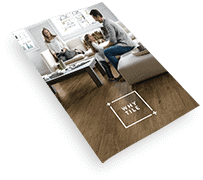
Download #OutsideTheBox: Your Tile Buying Guide…and get started now!

